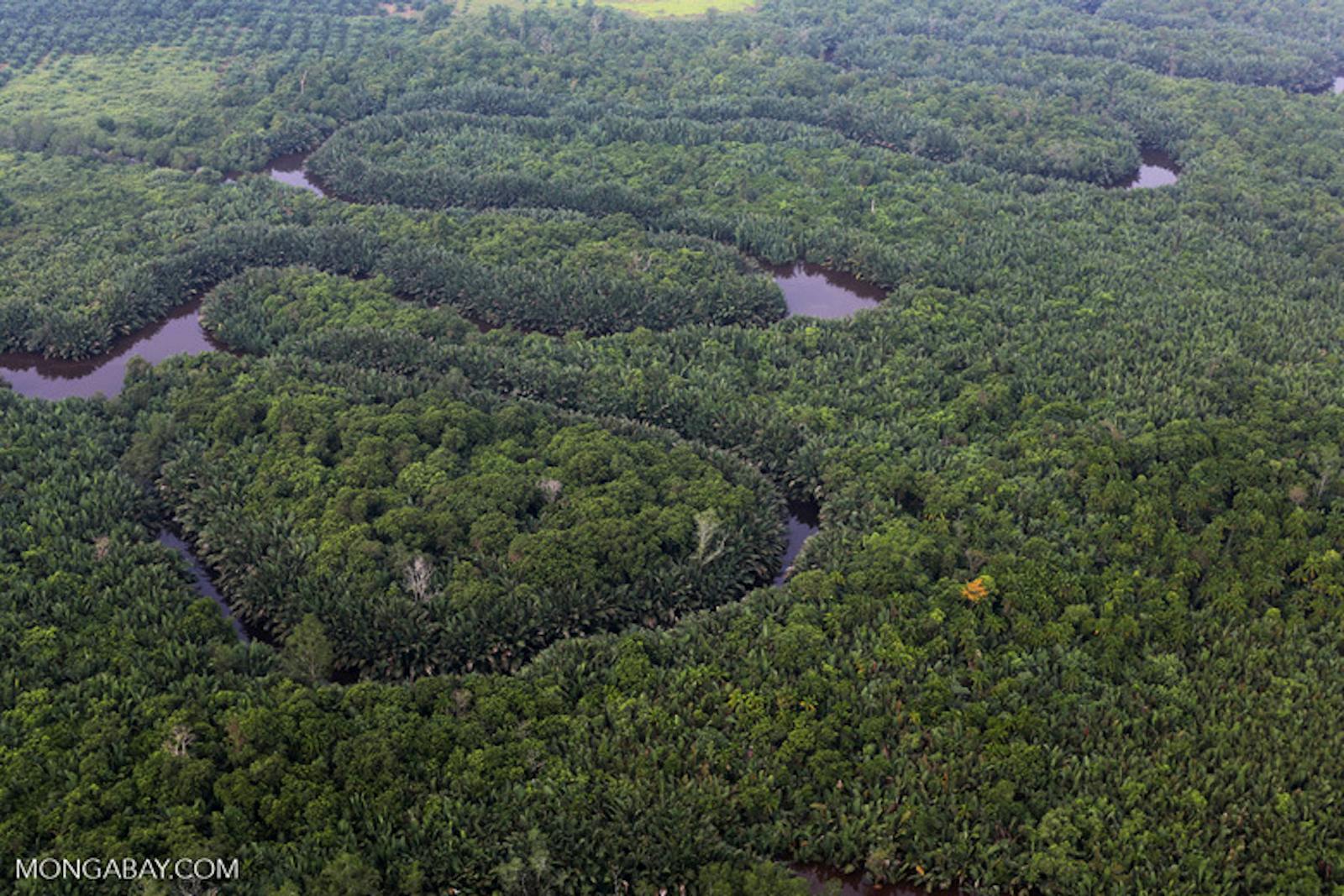Sumatran Freshwater Swamp Forests
The ecoregion’s land area is provided in units of 1,000 hectares. The conservation target is the Global Safety Net (GSN1) area for the given ecoregion. The protection level indicates the percentage of the GSN goal that is currently protected on a scale of 0-10. N/A means data is not available at this time.
Bioregion: Peninsular Malaysian & Sumatran Tropical Rainforests (IM18)
Realm: Indomalaya
Ecoregion Size (1000 ha):
1,812
Ecoregion ID:
277
Conservation Target:
28%
Protection Level:
1
States: Indonesia
The flat-headed cat is an unusual wild cat. Not much larger than a domestic cat, they have a distinctly flat, long, and tapered skull, close-set eyes that improve binocular vision, and small ears that are set further apart on the head. Their feet are webbed and, unlike most cats, their claws are only partially retractable. All of these are adaptations to a life spent hunting fish, crabs, and shrimp in swamps and wetlands in the night. The known distribution of the flat-headed cat is patchy, but it is linked to lowland wetland forests. The Sumatran freshwater swamp Forests is one of the holdout for this enigmatic wild cat.
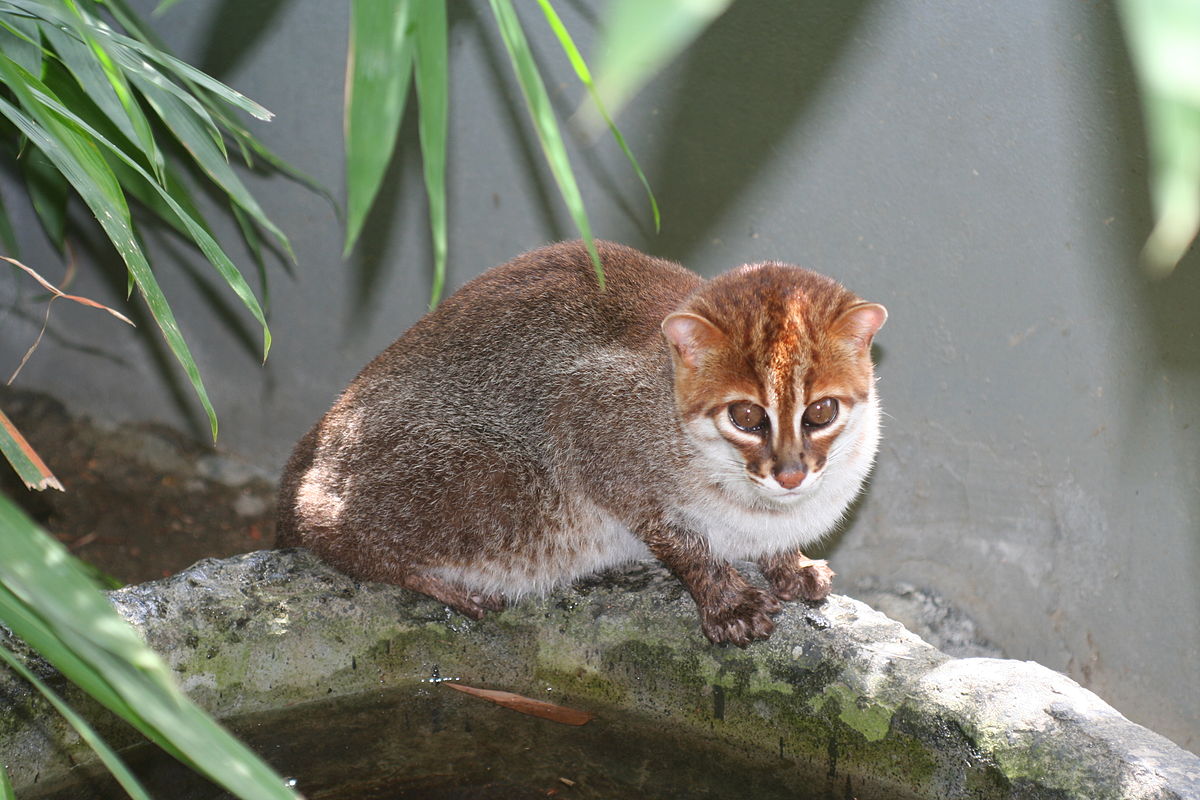
The flagship species of the Sumatran Freshwater Swamp Forests ecoregion is the flat headed cat. Image credit: Creative Commons
The Sumatran Freshwater Swamp Forests ecoregion represents the disjunct patches of freshwater swamp forests adjacent to the peat swamp forests in eastern Sumatra. These swamp forests grow on floodplains of low-lying areas that are periodically inundated, sometimes for over four months, by the meandering rivers. Unlike in peat swamps, the biomass is flushed out by the floodwaters and does not accumulate. The flowing water also makes the substrate less acidic and more aerobic.
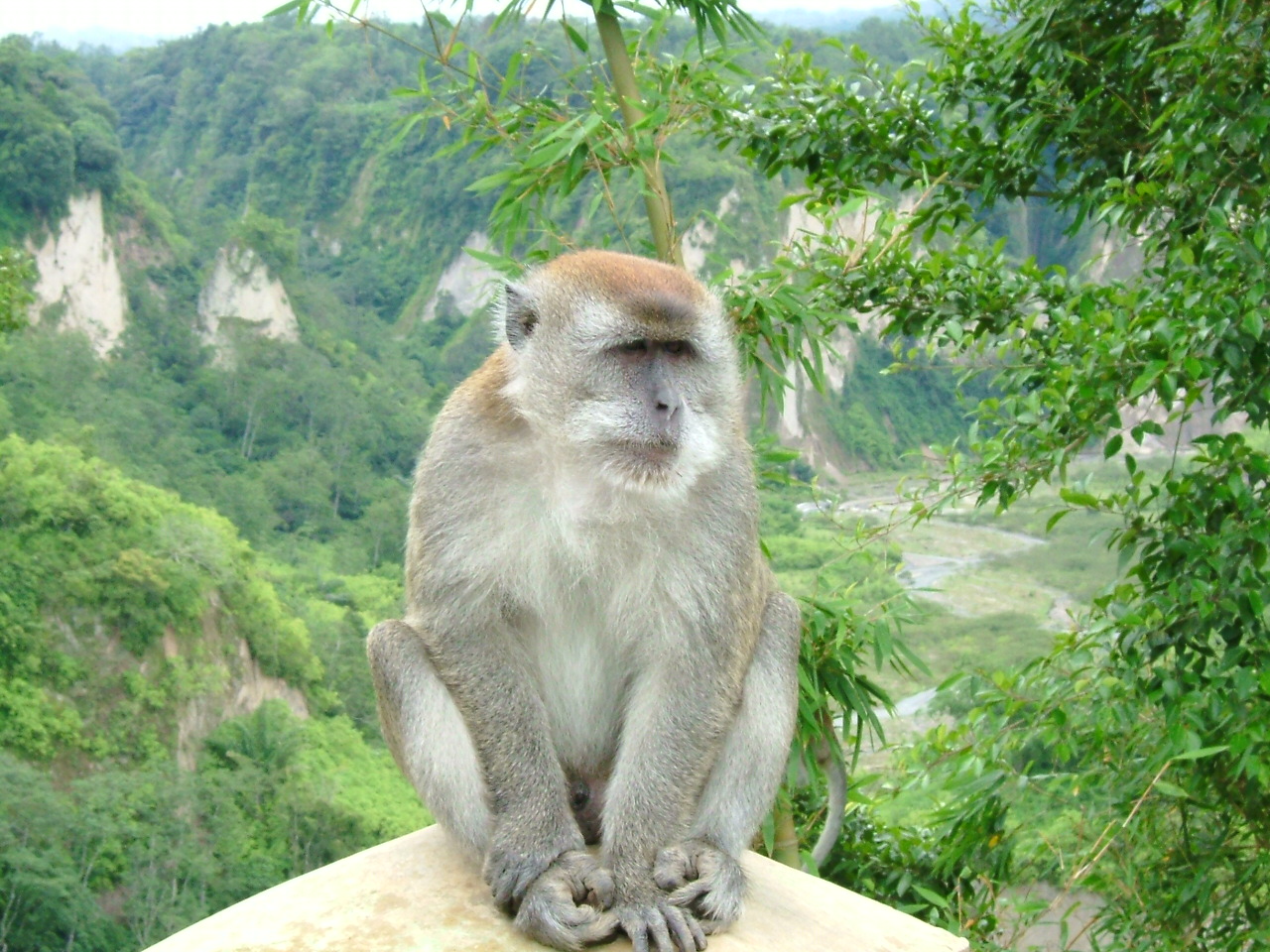
Long-tailed macaque. Image credit: Sakurai Midori, Creative Commons
The floodwaters also deposit fresh alluvial soils in the floodplain. Thus, the freshwater swamp forests grow on fertile substrates and are more diverse. The main species are Alstonia pneumatophore, an emergent tree that reaches over 50 m, in association with Dipterocarpus apterus, Shorea sumatrana, S. balangeran, S. palembanica, Campnosperma auriculatum, Mangifera paludosa, Artocarpus kemando, Parartocarpus venenosus, Baccaurea bracteata, Neoscortechinia kingie, Blumeodendron tokbrai, and swamp-adapted palms such as Oncosperma tigillarium, Pholidocarpus macrocarpus, and Eleiodoxa conferta.
Spiny rattans, such as Daemonorops geniculate, Korthalsia flagellaris, Korthalsia robusta, and Calamus caesius climb up the forest trees. Stenochlaena palustris is a climbing fern with edible shoots and leaves used in traditional medicines to treat a variety of illnesses, from fever to skin diseases and ulcers. Another is Vittaria elongata, an epiphytic fern with leaves that hang down like shoestrings. Along rivers, the forests are dominated by Nypa palms, which sometimes form pure stands.
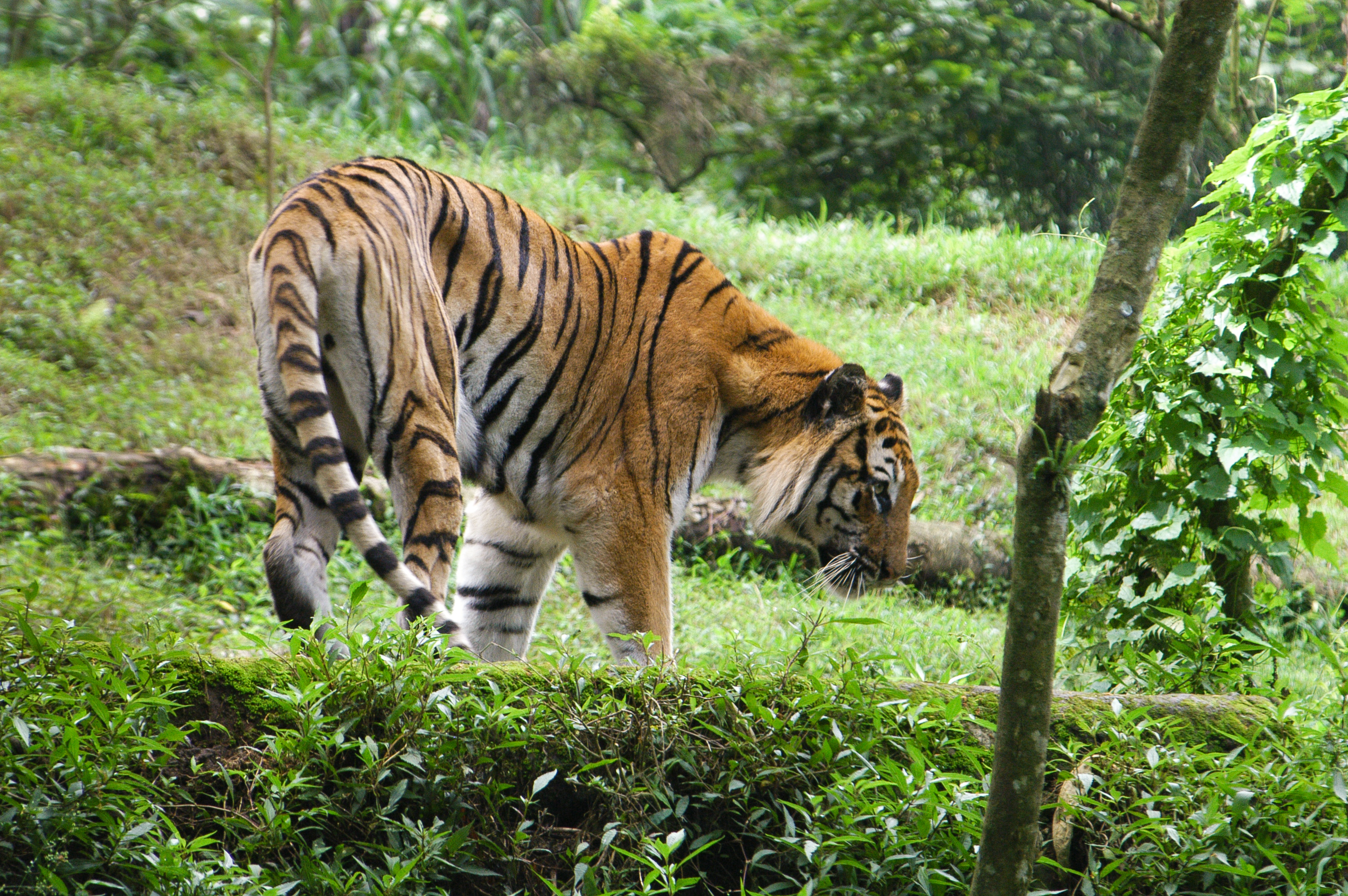
Sumatran tiger. Image credit: Peter Prokosch, Creative Commons
The freshwater swamp forests support some of the fauna found in the lowland rainforests, including the Asian elephant, and rare species such as the Sumatran tiger, Sunda clouded leopard, Malayan sun bear, and Malayan tapir. Several primates live in the forest canopy, including the white-handed gibbon, siamang, long-tailed macaque, and pig-tailed macaque.
Smaller species like the hairy-nosed otter, Asian small-clawed otter, Malay civet, common palm civet, masked palm civet, and small-toothed palm civet live in these forests. The false gharial and salt-water crocodile lives in the waterways and forests when flooded. The forests and swampy grasslands are important habitat for a large number of birds, especially herons, egrets, bitterns, whistling ducks, pygmy geese, lesser adjutant stork, milky stork, and Storm’s stork.
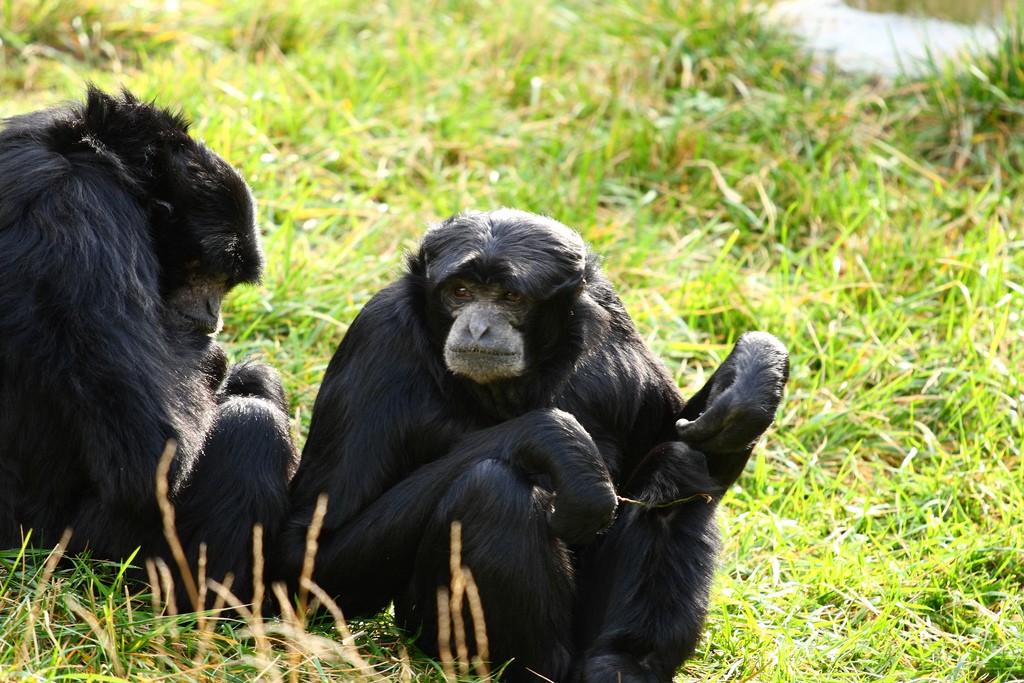
Siamangs. Image credit: Gordon Gartell, Creative Commons
Like all wetlands and freshwater swamp forests across the region, the forests of this ecoregion is also under severe threat from logging, clearing, draining, and conversion to agriculture and plantations. Less than 5% of the ecoregion is under any formal protection. Although maps indicate that about 40% of forests still remain, most are likely to be plantations. Even the existing, and established protected areas such as Way Kambas has been encroached and deforested.
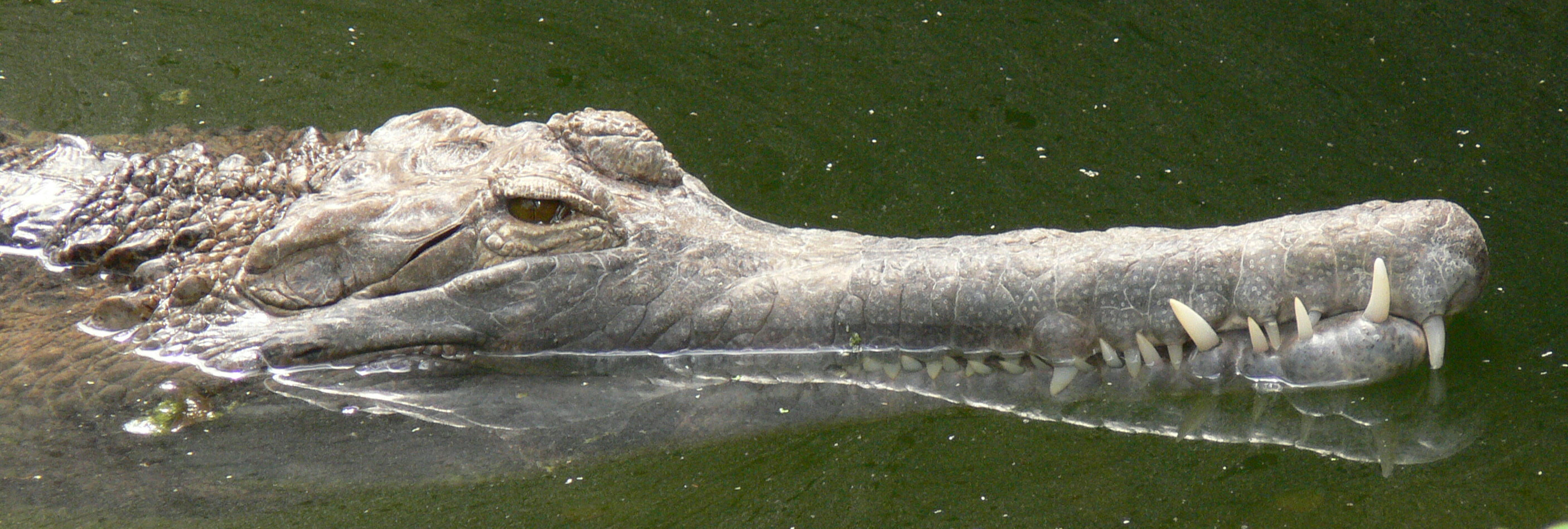
False gharial. Image credit: Creative Commons
Thus, the recommended priority conservation actions are to: 1) bring more intact freshwater swamp forests under the protected areas system; 2) stop further logging and draining of these forests for other land uses; and 3) assess the ecosystem service values of these forests to a larger community against the benefits to a limited group of stakeholders in any development scheme.
Citations
1. Anderson, I.P. and Bowen, M.R., 2000. Fire zones and the threat to the wetlands of Sumatra, Indonesia. Forest Fire Prevention and Control Project.
2. Yule, C.M., 2010. Loss of biodiversity and ecosystem functioning in Indo-Malayan peat swamp forests. Biodiversity and Conservation, 19(2), pp.393-409.
3. Wösten, J.H.M., Van Den Berg, J., Van Eijk, P., Gevers, G.J.M., Giesen, W.B.J.T., Hooijer, A., Idris, A., Leenman, P.H., Rais, D.S., Siderius, C. and Silvius, M.J., 2006. Interrelationships between hydrology and ecology in fire degraded tropical peat swamp forests. Water Resources Development, 22(1), pp.157-174.
